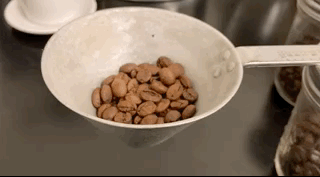On concocting a coffee service
I find it hard to write or talk about coffee online. For good coffee discourse, I can think of no better venue than James Hoffman's YouTube channel. My blog right here is more if you like incoherent rambling.
The problem for me is that coffee is ultimately a matter of taste. Without the taste, the actual experience of a good coffee, text about coffee is, well, bland. And so I love to talk about coffee, over a coffee. During work hours, I will prepare a coffee for pretty much anyone who wants one (+ one for me), if they come by my office (545 Bronfman, McGill U). I prefer a ristretto but I do also offer regular espresso, pourover and moka. It's mostly my fellow grad students, though occasionally I get local and visiting faculty too. We don't have to talk about coffee (though I won't say no to that).
The joy of the coffee service, to me, is the pleasure of discovery. Every service is unique. I usually have 3-4 types of beans on offer at any given time, and I blend them for each coffee service. I reject precision when it comes to coffee. I have scale, but it's not very precise, and I blend directly into the weighing cup, a few beans from this jar and a few more from another, based on what I know about the bean, the roast, the intended brew method, and the preferences of the recipient of the coffee, and also based on how I'm feeling. I have a step-less grinder, and my manual espresso machine offers effectively unlimited pressure modulation. My little electric kettle does not have a water thermometer. Every element of the brewing process varies every time I brew, with consistency at the mercy of small scratched calibration marks on my instruments, parallax, and the rhythms of my workflow.
Most of the time I have 2-3 of my own roasts, and one from a roaster. What good specialty roasters offer that I cannot, is a very consistent roast, especially with lighter roasts. My roasts, done in my little cast iron skillet, have more, shall we say, "character". The bean in the weighing cup in the give above is an example of a beautifully even light roast by a local Quebec roaster.
Specialty coffee shops in the 3rd wave American tradition tend to love their single original light roast brews. I find them a bit too acidic, a bit too one-note for my taste, and so I tend to blend speciality roasts with my own, often darker roasts. An Indian bean for body and mouthfeel, something from the Americas for aroma, and if I'm looking to add some complexity, a South East Asian or North African bean. Sometimes I'll add a tiny bit of robusta into the blend for a crema boost.

Comments
Post a Comment